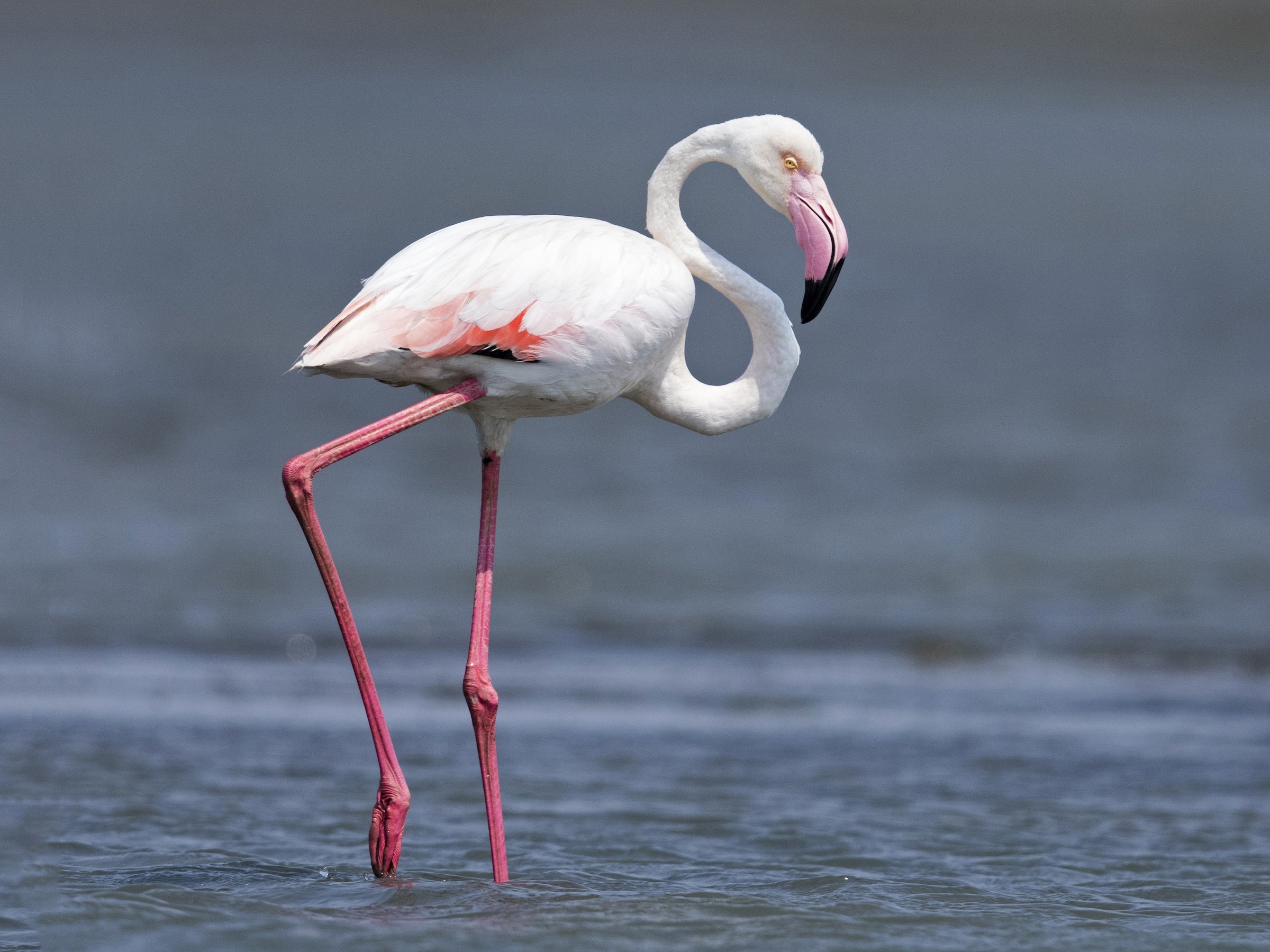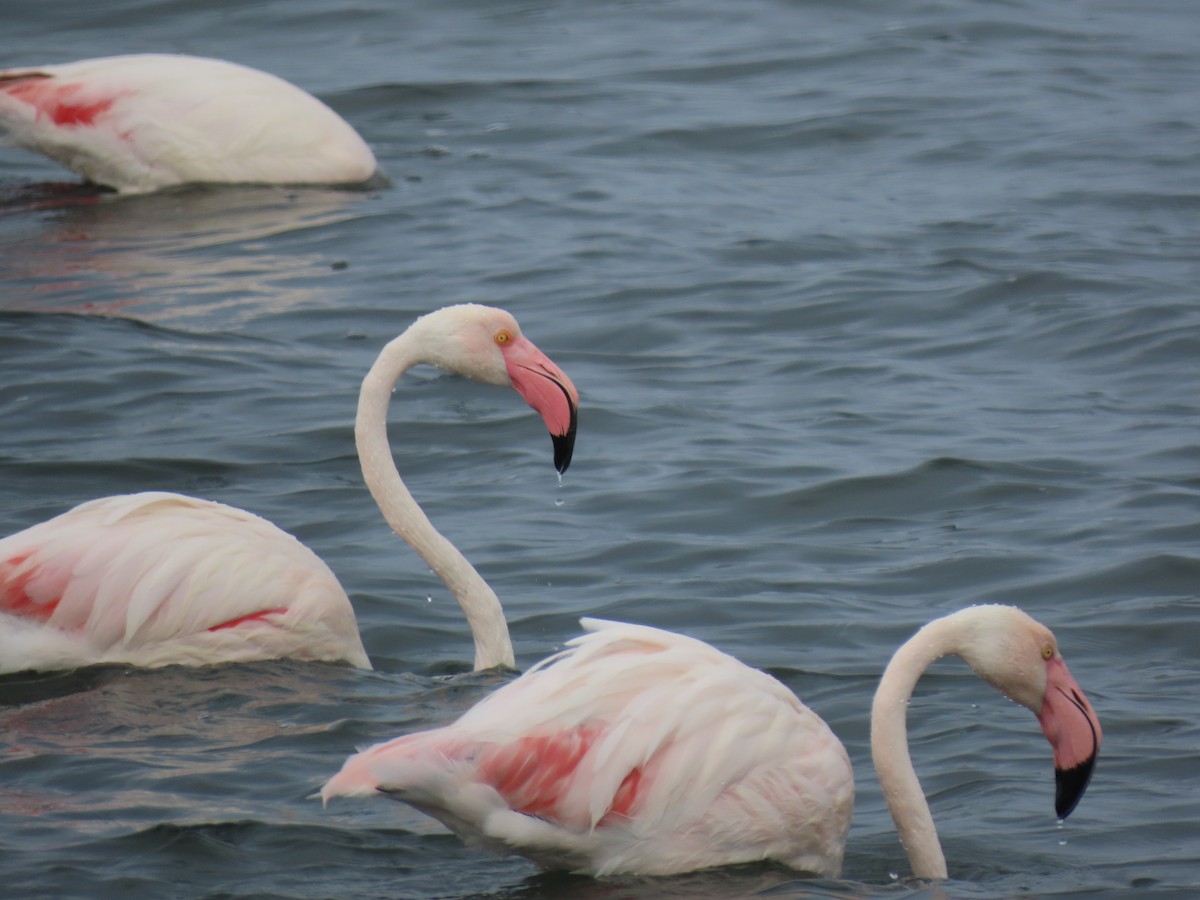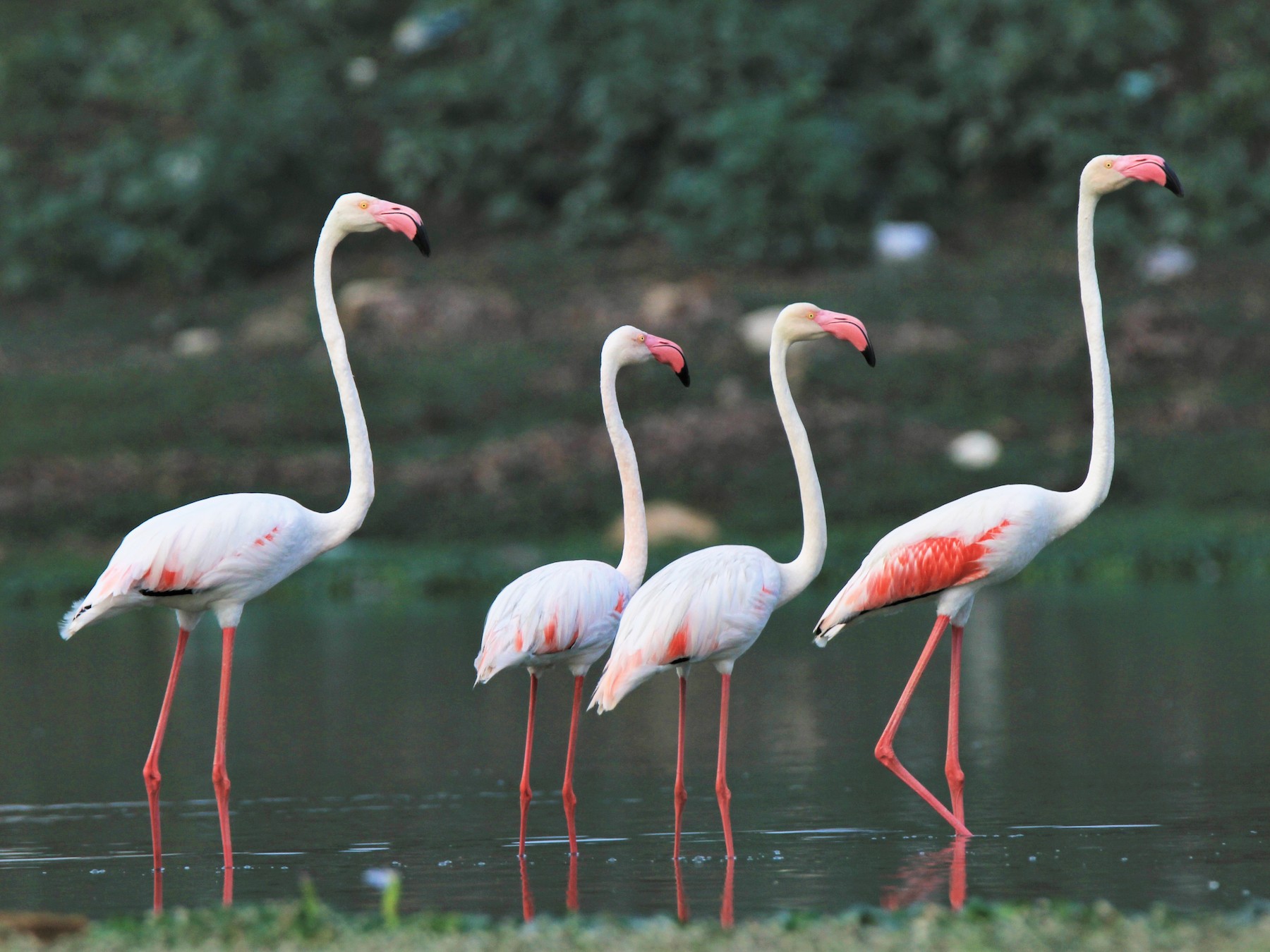Family: Phoenicopteridae
Genus: Phoenicopterus
This species is distributed across regions spanning from Africa and southern Europe through West Asia to South Asia. It is notably large, featuring a distinctive “coat hanger” neck, a sizable kinked bill, and remarkably long pinkish legs. While at rest, its plumage appears whitish with a subtle pale pink blush, often revealing hints of deep pink on closed wings. In flight, it extends its long neck and legs, showcasing a striking pattern of deep pink and black on its wings. More about flamingos in Solana Ulcinj
Photo: Look how gorgeous [myshortcode]
Description [myshortcode]

1. Native Range: The greater flamingo is found in various regions across the world. It is native to parts of Africa, Southern Europe, the Middle East, the Indian Subcontinent, and parts of Central Asia. This bird is particularly prevalent in the coastal regions of these areas.
2. European Population: In Europe, the greater flamingo has a presence in several countries, including Spain, France, Italy, Greece, Turkey, and Cyprus. It is known to inhabit coastal and inland wetland areas within these countries.
3. African Distribution: The greater flamingo is widely distributed across many countries in Africa, including Senegal, Nigeria, Egypt, Kenya, Tanzania, and South Africa. It can be found in various wetland habitats such as lakes, lagoons, and coastal mudflats.
4. Middle Eastern and Central Asian Range: This species also has a presence in the Middle East, with populations in countries like Iran, Iraq, and Kuwait. Additionally, it can be found in parts of Central Asia, including Kazakhstan and Turkmenistan.
5. Seasonal Movements: The greater flamingo is known to engage in seasonal movements, especially in response to changes in resource availability. During the breeding season, they often gather in large colonies in suitable wetland areas, and may migrate to different regions during the non-breeding season.
6. Human Impact: Human activities and the alteration of natural habitats have had both positive and negative effects on the distribution of greater flamingos. Human-made wetlands and protected areas have provided new habitats for these birds, but factors such as habitat destruction and disturbance have also impacted their distribution in certain regions.
In summary, the Phoenicopterus roseus, or greater flamingo, has a broad distribution encompassing various coastal and inland wetland habitats across Africa, Europe, the Middle East, and parts of Central Asia. Its presence in these diverse regions highlights the adaptability of this iconic species to different environments and the ongoing conservation challenges it faces.




